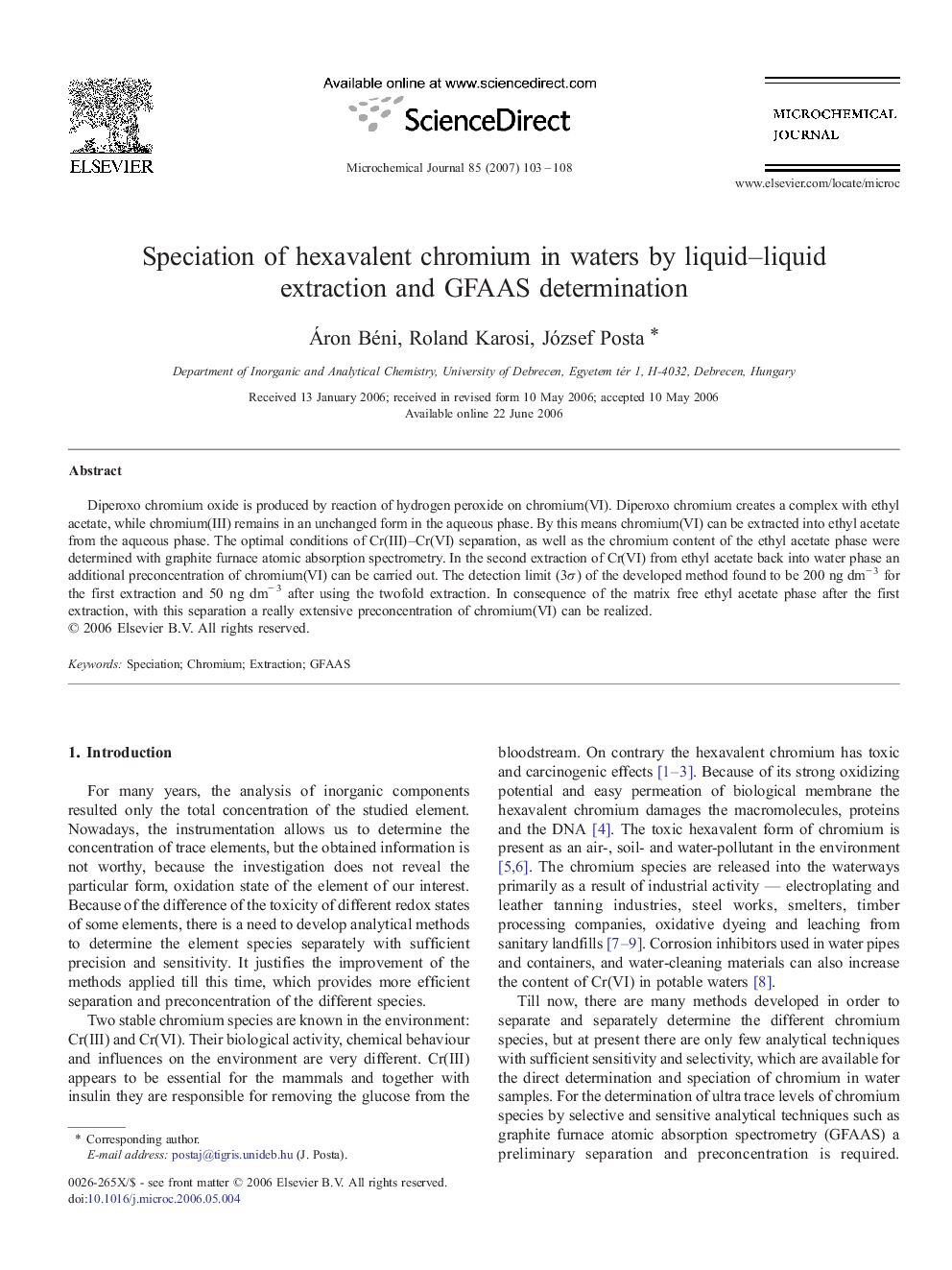| Article ID | Journal | Published Year | Pages | File Type |
|---|---|---|---|---|
| 1228539 | Microchemical Journal | 2007 | 6 Pages |
Diperoxo chromium oxide is produced by reaction of hydrogen peroxide on chromium(VI). Diperoxo chromium creates a complex with ethyl acetate, while chromium(III) remains in an unchanged form in the aqueous phase. By this means chromium(VI) can be extracted into ethyl acetate from the aqueous phase. The optimal conditions of Cr(III)–Cr(VI) separation, as well as the chromium content of the ethyl acetate phase were determined with graphite furnace atomic absorption spectrometry. In the second extraction of Cr(VI) from ethyl acetate back into water phase an additional preconcentration of chromium(VI) can be carried out. The detection limit (3σ) of the developed method found to be 200 ng dm− 3 for the first extraction and 50 ng dm− 3 after using the twofold extraction. In consequence of the matrix free ethyl acetate phase after the first extraction, with this separation a really extensive preconcentration of chromium(VI) can be realized.
